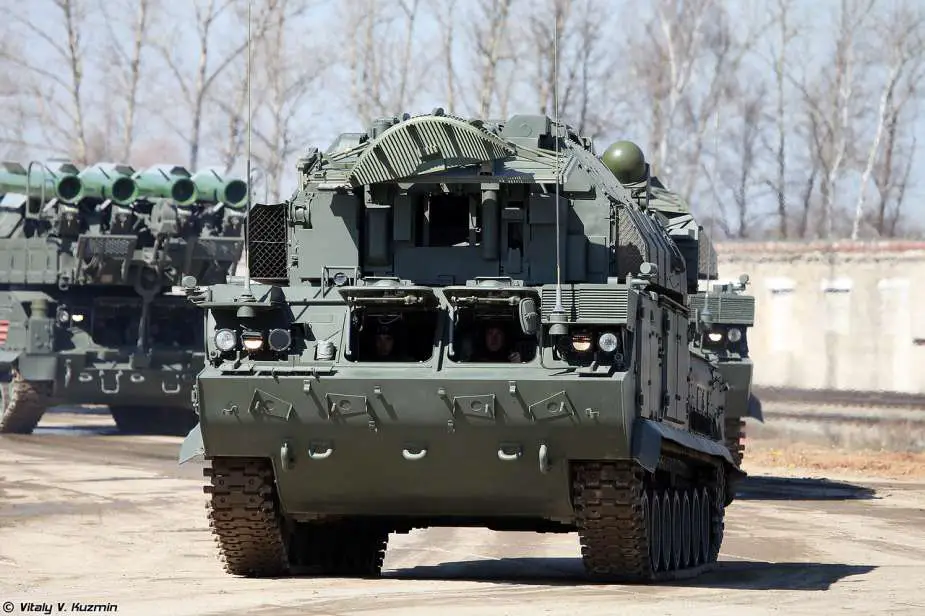In the ongoing conflict, Russian Tor-M2 air defense systems, as well as Igla and Verba man-portable air defense systems (MANPADS), have been crucial in countering air attacks from the Ukrainian Armed Forces in the southern region of Donetsk. These systems, managed by the Vostok force group, are continuously engaged in combat operations.
Follow Army Recognition on Google News at this link

The Tor-M2 is a short-range surface-to-air missile system (Picture source: Vitaly V.Kuzmin)
Air defense systems are currently a top priority and a major topic of discussion in the ongoing conflict. While there is often talk of Ukrainian needs, Russia also has significant air defense requirements and capabilities. It's interesting to examine what Russia possesses and the capabilities of its equipment.
The Tor-M2 has proven particularly effective in managing aerial threats. Its advanced radar system can automatically identify and engage targets within a 30-kilometer radius, effectively distinguishing between friend and foe. This ability has greatly improved its precision, leading to the successful elimination of many Ukrainian drones, missiles, and air bombs.
The Tor-M2 is a short-range air defense system designed to protect against various aerial threats. It is equipped with 8 missiles 9M331 or 9M332 and is used by several countries, including Azerbaijan, Armenia, Belarus, China, Egypt, and Russia.
Developed in Russia, the Tor-M2 has an effective missile range of 1,500 to 7,000 meters, allowing it to engage targets at various distances. Its capability to reach altitudes of 50 to 6,000 meters gives it significant flexibility, enabling it to effectively target aerial threats at varied altitudes.
This system is distinguished by its ability to deploy and engage targets quickly. It can handle 10 to 12 targets per minute, which is crucial in combat situations where rapid response is essential for defense. The Tor-M2 is equipped with an M2E PESA engagement radar and a Tor M2E search radar, both mounted on the turret. This setup allows for effective detection and tracking of targets. Operated by a crew of three, the Tor-M2 is sizable, measuring 7.5 meters in length, 3.3 meters in width, and 5.1 meters in height.
Last month alone, a Tor-M2 unit reportedly downed more than 10 Ukrainian UAVs. This record underscores the strategic importance of the Tor-M2 in the current conflict, playing a vital role in aerial protection in the Donbas region. The Vostok group's anti-aircraft missile unit, equipped with the Tor-M2, recently repelled an aerial bomb attack targeting Mariupol by Ukrainian forces.
However, Russian air defense does not rely solely on Tor-M2 and is complemented by MANPADS like the Igla. The Igla is a portable missile system designed for air defense. Equipped with a single 9M39 missile, it is used by a wide range of countries worldwide.
With a combat weight of 17 kg ready to fire and 18.8 kg in transport configuration, the Igla is designed to be easily portable by a single soldier. This mobility allows for operational flexibility and the ability to rapidly deploy the system in response to aerial threats.
The missile itself weighs 10.6 kg, with a high-explosive fragmentation warhead weighing 1.17 kg. Its flight speed is 570 m/s, and it can engage targets at altitudes ranging from 10 to 3,500 meters. The Igla can engage various targets, including tactical aircraft, helicopters, UAVs (unmanned aerial vehicles), and cruise missiles.
The missile's engagement range varies from 500 to 5,200 meters. The system's reactivity is also a key element, with a reaction time of 5 to 10 seconds, allowing for rapid response to approaching targets. The Igla's guidance system uses a passive IR homing device and night vision, operating in the medium IR range. This technology enables the missile to track and engage targets with precision, even in low visibility conditions.
In terms of dimensions, the missile measures 1.574 meters in length, underscoring its portability and ease of use in the field. In summary, the Igla is a portable, effective, and versatile anti-aircraft missile system, designed to provide rapid and mobile defense against a variety of aerial threats in diverse combat situations.
Russia, therefore, has multiple solutions and seems less concerned than Ukraine about the security of its airspace. However, it should not rest on its laurels, and the Russians have increased the production of air defense systems to continue maintaining a degree of control especially since Ukraine is set to receive F-16s and has significantly increased its UAV production. Although Russia has the advantage in the aerial domain, the game is far from over.















